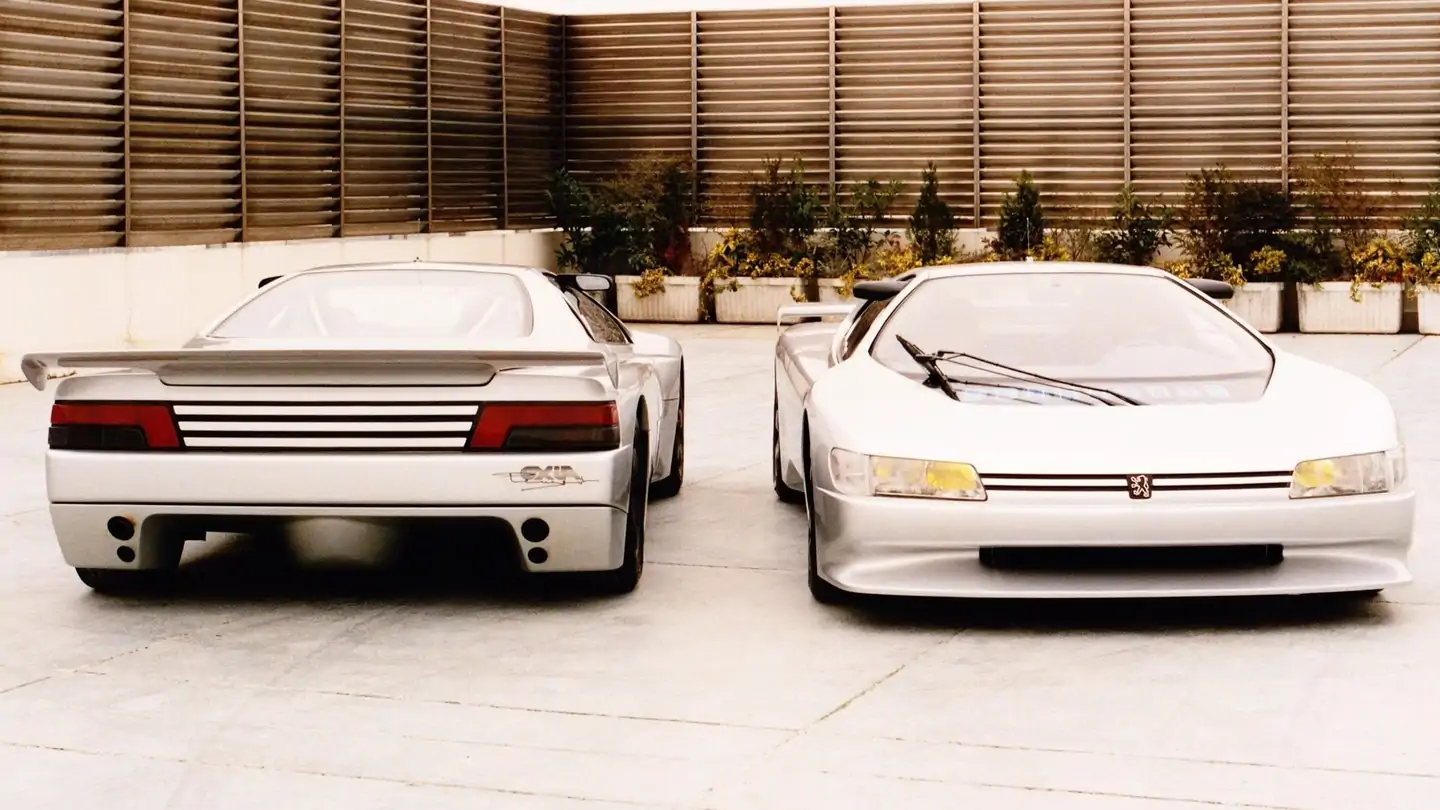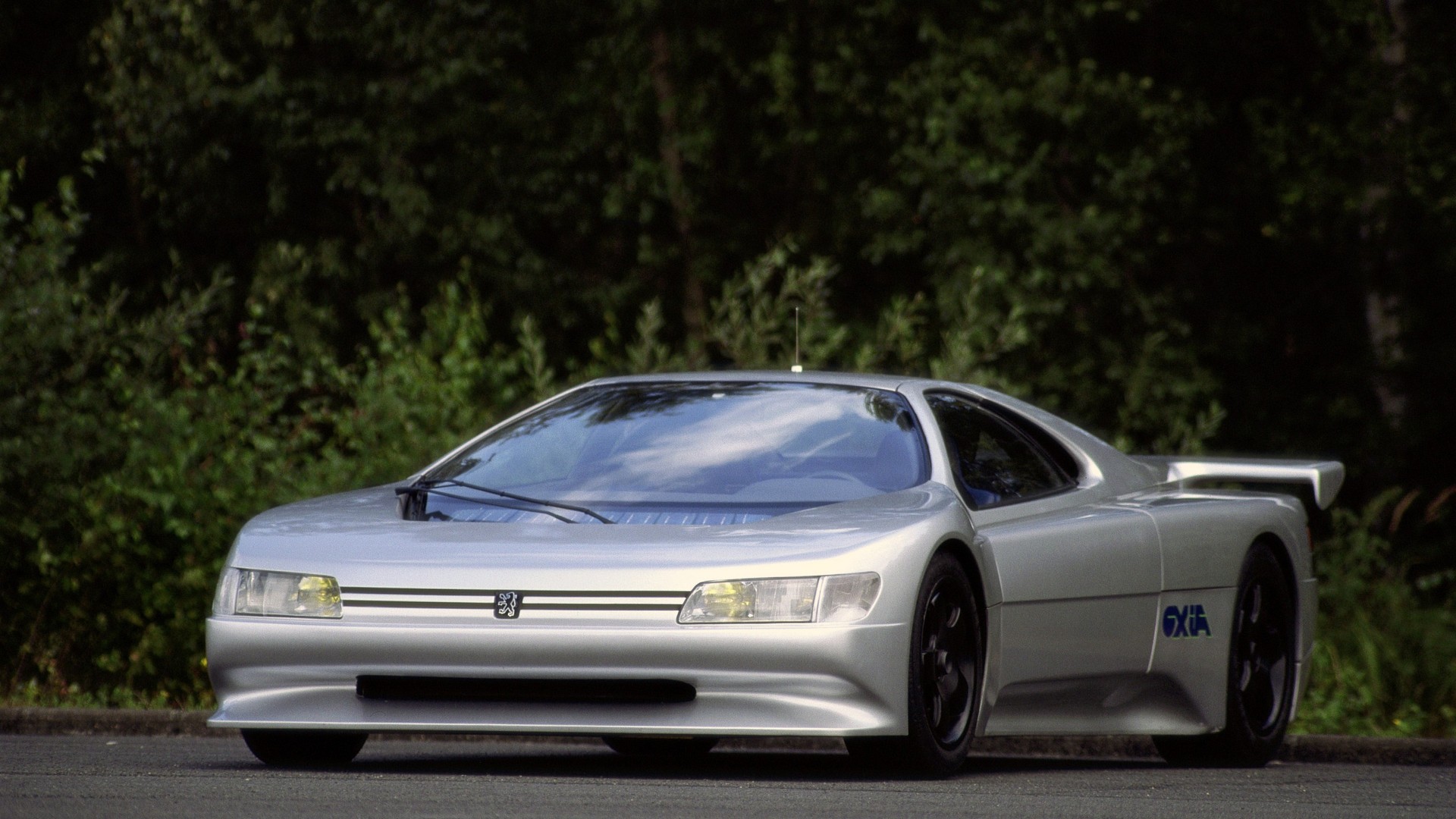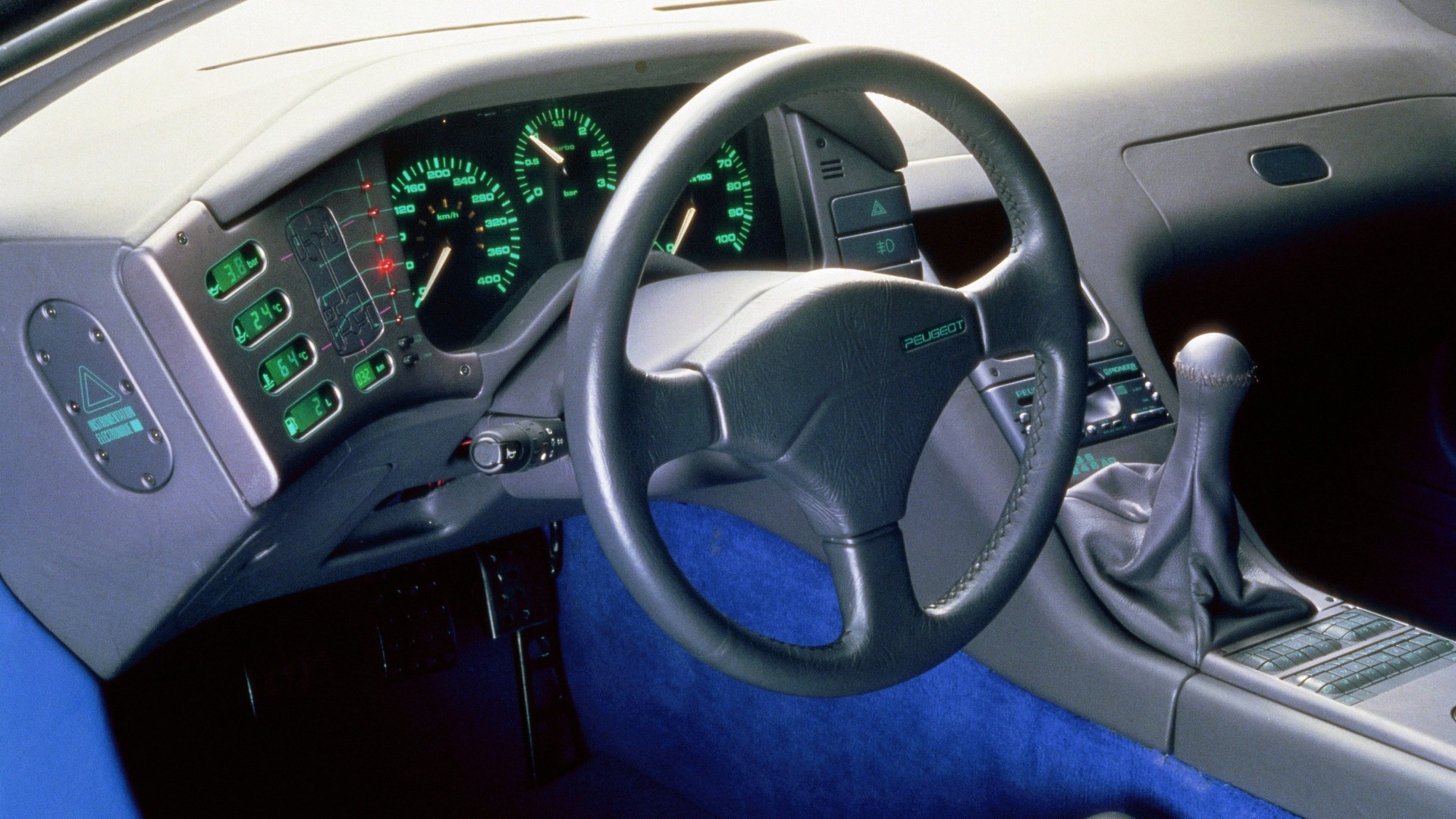Peugeot created a supercar that could reach 217 mph (350 km/h) in this time.
Specifics:midmounted biturbo V6 engine with 670 HP (500 kW), and 535 Lb-ft (6720 Nm), six speed manual gearbox, AWD, six-speed manual transmission, six-wheel steering, 3,000 pounds (1,360 kg). If you are still skeptical, take a look at the technical specifications once more. The Oxia, named after a region of Mars, was a marvel of engineering. It featured a light body made of carbon fiber and Kevlar with an aluminum honeycomb structure. The entire chassis weighed in at only 180 lbs (81.6kg) and Peugeot engineers fitted both front and back limited-slip differentials. This dramatic concept was essentially a race car for roads with incredible performances for a late 80s car. Peugeot was quite conservative in listing the top speed as 187 mph (390 kph). However, the Oxia was actually capable of reaching 217 mph (355 kph) under the control of Jean-Philippe Vittecocq, a Michelin test driver at the Nardo track. Even today, the car’s 0-60mph (0-96 km/h) sprint speed of less than five seconds is still impressive.


